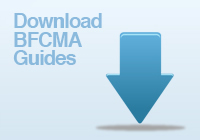Maintenance & Inspection
It is important to check the condition of an old chimney, especially when re-opening one, after many years of not being used. A chimney should contain a sealed flue from the appliance to the chimney pot to transport the products of combustion safely to the atmosphere. Over time the condition of the flue can deteriorate. It was only from 1965 that Building Regulations required all new chimneys to be built with suitable flue liners of the correct flue size to protect the chimney.
The check should be carried out by a chimney specialist and would entail the following procedures:
- The chimney should be swept to ensure that it is clear obstructions such as dislodged masonry or bird's nests
- A smoke test should then be carried out to establish whether there is any major fault that can cause products of combustion to leak through the chimney walls. A smoke test procedure is given later on in this guide.
- The structural stability should also be checked, as well as making sure the chimney is wind and water tight.
This should identify the repair work that is needed. Often the safest and most economical way to make the flue secure is to reline the chimney shaft with new liners. This can be done with clay, concrete or pumice liners, single wall stainless steel or flexible stainless steel liners.
To reline the chimney with clay, concrete or pumice liners, the liners are lowered down the chimney on guide ropes with locating bands at the joints. The gap between the liners and chimney is then backfilled with a lightweight insulating compound. The existing flue opening has to be made large enough for the liners to be installed. This benefit of this type of re-lining is its durability. However the cost can be prohibitive.
The alternative is to use stainless steel liners, either single wall rigid liners or flexible liners. Stainless steel flexible liners are designed to take on the shape of the chimney. The liners are installed by either lowering them down or pulling them up the chimney. They can go around most bends. Whilst their slim profile enables quick installation into chimneys where other systems might not fit, their life can be reduced if abnormally high corrosive soot or condensate deposits are created and allowed to accumulate in the flue or have not been thoroughly removed from the walls of the existing chimney flue.
The chimney should be swept regularly to remove soot and tar. At the very least the chimney should be swept at the start of the heating season. It is not recommended that the appliance is over fired, (allowed to burn fiercely and out of control), or chimney fires be started in an attempt to clean the chimney. Deposits of soot and tar will be greatly increased if unseasoned wood is burnt. Should a chimney fire occur, the chimney and appliance should be checked for damage before using them again.
It is also good practise to check at least every year or two the exposed parts of a chimney, flashings and terminals for signs of damage. Just like the outside of a house chimneys can suffer from the wear and tear of extreme weathering.
If at any time smoke or fumes are apparent or suspected from the appliance, chimney or flue, seek advice immediately from the installer or chimney expert in case there is a blockage or failure. Do not use the appliance or chimney until they have been thoroughly checked for safety and soundness. The escape of fumes can be dangerous.
Visual inspection of metal system chimney within enclosures
Document J calls for the inspection of concealed flues in voids. The new BS EN 15287-1 provides guidance on how this can be done.
Where practical, the length of the chimney may be inspected after installation, from below by removal or looking through the firestop plate or register plate, or by inspection looking down from above in the roof space, possibly by the use of a camera.
Where this is impractical a 100mm square access door should be created to allow for inspection by other means e.g. with a torch and mirror.
When the installation of connecting flue pipe is completed, an inspection should be carried out to ensure that all joints have been properly made and that all supports and clips are properly located and secured in accordance with the manufacturer’s installation instructions.
As a guide all flues should be swept before and during the heating season, and ideally at the end of the heating season to prevent tar and soot deposits having a corrosive effect on the chimney and appliance during the dormant period.
Mechanical sweeping with brush and rods is the only method of cleaning recommended because materials other than soot can block the flue e.g. mortar, brickwork, birds’ nests. For this reason cleaning a flue using just chemical chimney cleaners or vacuum cleaning cannot be recommended as an alternative for correct chimney cleaning. (Some chemical cleaners can invalidate manufactures warranties).
Sweeping brushes should be made from suitable bristle and be of the same diameter or area as the flue being swept, and be fitted with a ball or free running wheel boss on the end to prevent scraping the flue walls, particularly at bends. Chimney manufacturers give instruction to which brush type to use on their systems. Use a qualified chimney sweep or member of NACS (National Association of Chimney Sweeps) who provide an inspection and sweeping certificate.
BS EN 15287-1 has introduced a new flow test for metal chimneys.
Smoke Test Masonry Chimneys
The appliance, if fitted, should not be alight at the time of test. Before commencing, the chimney flue should be warmed by a gas blow lamp or similar heating device for about 10 minutes. The ashpit door of the appliance and thermostat (if fitted) should be in the closed position. Any soot doors or flue pipe access doors should be closed.
Two smoke pellets should be placed in the appliance firebox or the bottom of the chimney or the appliance recess and ignited. When smoke starts to form, the heating appliance or appliance recess or the bottom of the chimney should be closed and the smoke should be allowed to drift upwards. When smoke is observed rising from the chimney, the terminal should be sealed. An inflatable rugby ball bladder is ideal for this as it will accommodate any variations in dimensions. Alternatively, a polyethylene bag can be placed over the terminal and sealed around the edges.
The chimney breast and surrounding walls should then be observed at ground level, first floor level, roof space level and terminal level to check for major smoke leakage. As this may occur some distance from the original fault, particular attention should be taken at barge overhangs to end of terrace dwellings and at eaves for leakage from cavities. The smoke test should be allowed to continue for at least 5 minutes.
If there is no sealed heating appliance but an open-type fire or appliance recess, a piece of board should be placed over the fire opening and sealed around the edges after igniting the smoke pellets.
Some smoke leakage may be seen during the smoke test and it is a matter of expert judgement to whether leakage indicates failure.
NOTE 1: If the chimney being tested forms part of a multi-flued construction as in a back-to-back situation, the fire(s) connected
to the other flues should not be alight.
NOTE 2: The smoke test should be carried out using suitable smoke pellets. The minimum performance of a pellet should be one,
which the pellet manufacturer claims generates 5m3
of smoke in 30 seconds burn time.
Flue Flow Test Metal Chimneys (draw test)
The appliance, if fitted, should not be alight at the time of the test. Before commencing, the chimney flue should be warmed by a gas blow lamp or similar heating device for about 10 minutes. The ashpit door of the appliance and thermostat (if fitted) should be in the closed position. Any soot doors or flue pipe access doors should be closed.
Two smoke pellets should be placed in the appliance firebox or the bottom of the chimney or the appliance recess and ignited. Open the combustion air controls. When smoke starts to form, the smoke should be allowed to drift upwards. The test is satisfactory if, while the smoke pellet is burning, there is no spillage of smoke at the heating appliance, no seepage of smoke over the length of the flue and there is discharge of smoke from the terminal.
However, if there is smoke spillage at the heating appliance position, or seepage from the chimney then the test has failed. Some smoke leakage may be seen during the draw test and it is a matter of expert judgement as to whether any leakage indicates failure.



